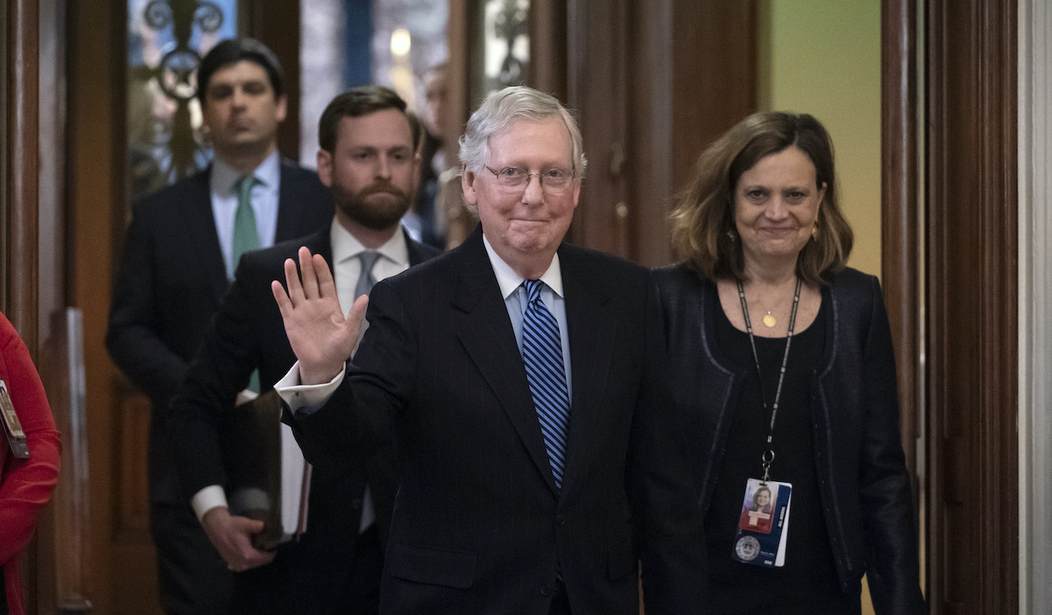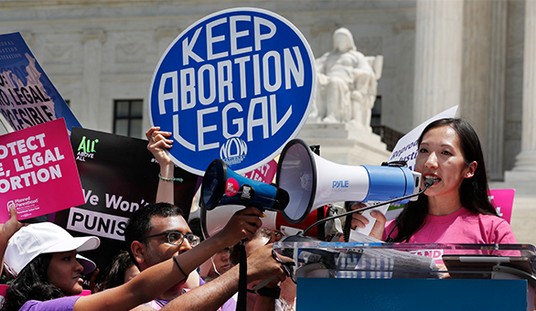As I laid out a few days ago, it is almost a certainty that the GOP will retake the House of Representatives in 2022 after Congressional Districts are redrawn following reapportionment which will see GOP states Texas, Florida, and North Carolina gain seats. GOP control of the redistricting process in states with 188 Congressional seats – along with the minuscule margin of only 4 seats that the Democrats will enjoy in the next Congress — combine to make Kevin McCarthy the “Speaker-in-Waiting”. It’s not a question of “if”, it’s only a question of “when” — and that’s not even in question. Pelosi knows it as she pledged to not seek the Speaker’s Chair again in 2022.
To avoid this being the narrative about Congress during the first two years of a Biden Administration — maybe — I have seen some press attention start to be given to the subject of the Senate election in 2022. Politico ran a story a few days ago with the headline “Republicans Dash to Defend Perilous 2022 Map”.
The 2022 class of Senators won election or re-election when Donald Trump captured the White House in 2016. It is also the class of 2010 and 2004, both of which saw GOP gains in the Senate, so the class has more GOP seats than Democrat seats up for re-election.
That simple fact seems to guide press coverage on this subject but ignores the basic reason why so many GOP Senators are in this particular class — the over-representation of seats from states that are strongly Republican at this moment in history.
I read some analysts’ evaluations of the just past 2020 class elections which suggested that as many as 12 GOP Senators were “vulnerable”, while only 2 Democrats were in similar circumstances. It’s funny how these evaluations always seem to end up with the GOP Senators “slipping the hangman’s noose” while the vulnerable Democrats can’t seem to do so. There certainly were a small handful of GOP Senators who were in tough campaigns, but only 5 were really “at-risk” in any meaningful way — two were legitimate underdogs to strong Democrat challengers.
The GOP lost with McSally in Arizona and Gardner in Colorado. Both had quality Democrat opponents, both were underwhelming GOP Senators in states that have moved in the direction of Democrats in recent elections. Colorado is pretty much a blue state now, and Arizona has not been friendly to Trump due to the antagonistic relationship he had with “favorite son” John McCain.
In seven remaining NYT “toss-up” races — all involving GOP incumbents — the GOP won 5 with the 2 Georgia runoffs yet to come. The margins in the 5 were +10, +10, +8, +7, +1.5.
In 5 other races the GOP was deemed by the NYT prior to the election to likely win “narrowly”, the GOP won all 5, and the margins were +20, +13, +12, +12, +10. Real squeakers.
Of the 12 races identified as having “vulnerable” Republicans, two lost who were always considered vulnerable in their states, and one had a margin of victory under +2. The other 9 won comfortably.
So what does 2022 hold in store? More of the same.
By that, I mean more false narratives from the press about “vulnerable” GOP Senate incumbents running for re-election who are not vulnerable at all.
Start by just looking at the states with GOP Senators up for re-election:
Alabama, Alaska, Arkansas, Florida, Idaho, Indiana, Iowa, Kansas, Kentucky, Louisiana, Missouri, North Carolina, North Dakota, Ohio, Oklahoma, Pennsylvania, South Carolina, South Dakota, Utah, and Wisconsin.
Two of those states were “won” by Joe Biden — allegedly — Pennsylvania and Wisconsin.
At least two of those states will have open seats, as Pat Toomey in Pennsylvania and Richard Burr in North Carolina have announced they will not seek re-election. Given the 2020 results, you would have to give Democrats a chance of winning both if they run a viable candidate. Also keep in mind, however, that we have been told anti-Trump hatred drove the crazy turnout in those two states in 2020, and Donald Trump will not be on the ballot in 2022.
Lisa Murkowski will face a significant primary challenge in Alaska, and not from a little know Tea Party candidate this time. If she loses the primary she may attempt to replicate her win as an independent but I doubt she’ll pull it off again.
Chuck Grassley may retire, but Iowa was just won by Pres. Trump by +8 and Sen. Joni Ernst just won re-election by +7. Iowa has been trending GOP, and will likely have an all-GOP Congressional delegation in 2022.
Roy Blunt narrowly won re-election by +3 in 2016, but Pres. Trump just carried Missouri by +15. I do not see Roy Blunt as having a repeat of a close contest in 2022.
Ron Johnson in Wisconsin will have a difficult race. He won narrowly in 2016, and Wisconsin just proved it is still almost evenly divided (allegedly). The quality of his opponent will be a significant factor in the race.
No other GOP Senators are remotely troubled for re-election if they choose to run.
But let’s consider for just a moment the Democrat class that is up for reelection. Here are the states with Democrat Senators:
Arizona, California, Colorado, Connecticut, Hawaii, Illinois, Maryland, Nevada, New Hampshire, New York, Oregon, Vermont, and Washington.
A much smaller class and all states won by Joe Biden — allegedly in a couple cases as Arizona and Nevada had very small margins. In Arizona, it will be Mark Kelly who just won the special election to finish out John McCain’s term.
But two interesting contests that will likely be overlooked are New Hampshire and Vermont.
Joe Biden did carry New Hampshire by +8, but New Hampshire voters did some serious split-ticket voting. GOP Governor Chris Sununu won reelection with 65%, and both the State Senate and State House flipped from Democrat to GOP.
Vermont — where Patrick Leahy will be 82 on election day — has a GOP Governor, Phil Scott, who just won re-election to his third term with 69% of the vote, and is 61 years old. Leahy first won election to the Senate in the Watergate class of 1974.
Mark Kelly in Arizona proved that he could beat a GOP candidate who had already proved she could lose to Krysten Sinema. I’m not sure what Martha McSally lacks as a candidate, but it must be significant because she lost to two rather weak Democrat opponents. Presumably, the Arizona GOP can produce a better opponent for Kelly in 2022.
Katherine Cortez-Masto in Nevada has always impressed me, and the Nevada GOP will need to find a strong candidate to seriously challenge her. But if we are headed for a Biden Administration, the first mid-term election after a new party takes over the WH is almost always a disaster and some Senators who should not lose end up doing so. With Trump losing Nevada by only 2% (allegedly), there is certainly an opportunity for the GOP to make a serious bid for this seat if it can find the right candidate.
The GOP has two seats coming open with retiring incumbents, and races in a couple of battleground states. The only “embattled” incumbent — Murkowski — faces more of a threat from her own party than the Democrats.
The Democrats have two seats that should be safe — New Hampshire and Vermont — which might be less safe than imagined. Arizona and Nevada are both potential tight contests of the GOP can secure quality candidates in each state — especially if we see a typical first midterm result after a change of party in the White House.














Join the conversation as a VIP Member